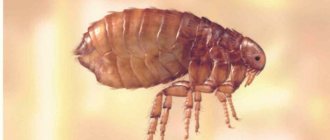Rabies or hydrophobia is one of the diseases of past centuries that flourished in an era of unsanitary conditions, poorly developed medicine and close human contact with animals.
Just a century ago, livestock, domestic animals and people died out from the rabies virus. Today, people mostly come into contact with healthy pets with a full set of medical vaccinations. In conditions of developed veterinary medicine and pharmaceuticals, rabies has become less common, but there are exceptions: when the virus affects stray and domestic animals, and then people.
Which rats carry rabies?
Any pet can get rabies, even a decorative rat that does not leave the house. Although such cases are the rarest available: rabies is mainly carried by dogs, foxes and cats – 80%. Less commonly, other animals, including rats.
The disease is transmitted through the saliva of an animal or person, so stray dogs, cats and rodents that eat “from the same plate” and start street fights are more susceptible to infection.
Rabies in decorative rats is a rare case, since the pet is in a cage almost all the time and does not go outside. A domestic rat can contract the infection while going outside, through contact with another infected animal, or from an owner who introduced the disease. A more likely version is that a rat became infected from a person, since a person becomes a carrier if he touches an infected animal.
How dangerous is a rodent bite?
Contact with an infected rodent is dangerous not only due to rabies, but also other dangerous infections (sodoku, tetanus, leptospirosis, yersiniosis) that these animals can carry.
Delayed diagnosis can lead to severe complications, including death. For this reason, the condition of a person who has been bitten by a decorative or ordinary rat must be monitored for several days.
Interesting! According to statistics, only every 30 people who are bitten by a rat consult a doctor. The rest of the people treat the wound and forget about the incident. Such injuries are most dangerous for children, the elderly, and patients with weakened immune systems.
Decorative rats have sharp teeth, which they can use to inflict lacerations and damage small bones of the fingers, leaving cracks in them.
Pet bites can lead to psychological trauma or phobias. Similar complications occur in children, adolescents, and impressionable people.
After being bitten by a decorative rat, it is important to take immediate measures that will reduce the likelihood of complications that can be caused by the penetration of pathogenic microorganisms into the blood. After treatment, the person must visit a doctor.
Signs and symptoms of rabies in rats
The classic symptoms of infection, which are similar in all animals, but have different times of manifestation, will help you suspect rabies in a rat. The incubation period of virus maturation lasts from 14 to 90 days, during which the animal has no obvious signs of the disease.
The first stage of rabies can mislead the owner, as it begins with apathy, which is characteristic of other diseases. The only suspicious sign that can immediately indicate rabies is fear of light. Following the period of apathy and lethargy comes a period of causeless aggression and throwing the animal around the cage. The rat loses its appetite, saliva comes out of its mouth, vomiting and shortness of breath appear.
What are the dangers of living with rodents?
Most rodents feed on leftover food that people throw away. Because of this, mammals settle in residential buildings or in close proximity to them. All this leads to frequent human contact with the pest. To avoid negative consequences, you should know the harm rats bring to people.
Attention! More than 2,000 people die every year from diseases carried by rats.
Rat bite – how dangerous it is and what to do after the bite
Plague
This disease has killed hundreds of thousands of people over the centuries. In the 21st century, 2000–3000 cases of infection are recorded annually, 7% of which end in the death of the patient. Rodents are considered the main spreader of plague. These harmful mammals are carriers of the plague bacillus, which quickly develops in their body.
In most cases, infection occurs through rat attacks on humans. However, there are situations when the plague was suffered not by rodents, but by fleas living on their bodies.
Infection process:
- The flea takes up residence in the fur of a plague-infected rat and begins to drink the blood of its victim.
- Bacteria enter the insect's stomach and multiply quickly.
- Gradually there are so many of them that they block the esophagus.
- When a person comes into contact with a rat, the flea changes its owner.
- The insect bites its new victim and tries to swallow its blood.
- Due to a clogged esophagus, she has to regurgitate some of the “food” into a wound on the person’s body.
- As a result of this, the plague bacillus enters the human blood.
Encephalitis
Rats are the main target of ticks. These blood-sucking insects wait for their prey and at the right moment cling to its fur. After that, they gnaw through the skin and get to the blood of the rodent. While “eating,” the ticks unwittingly infect the rat with encephalitis (a disease characterized by inflammation of the brain). In the following days, mammals may bite a person and infect him with a dangerous disease.
Manifestations of encephalitis:
- prolonged fever;
- high temperature (38 to 40°C);
- severe chills.
In the absence of proper treatment, nausea, vomiting, headache, insomnia and weakness appear.
Sodoku
Sodoku is often called a rat disease, since it can only be contracted through the bite of this rodent. In the first few days, the bitten person feels great and does not experience any health problems. However, after this the following symptoms appear:
- muscle pain;
- gradual increase in temperature to 39–40°C;
- impaired coordination of movements;
- excessive excitement.
Sodoku can greatly harm a person if left inactive for a long time and if one refuses to take antibiotics. In advanced cases, the likelihood of death increases greatly. If you take timely measures, you can get rid of a dangerous disease in a short time.
Streptobacillosis
A person becomes infected with this dangerous disease after being bitten by a rodent. Bacteria enter the blood and quickly begin to develop. Within a few hours the patient feels unwell. In addition, the temperature rises sharply and allergic rashes appear. If treatment is not started in time, the bacteria will attack the lymph nodes and cause swelling of the soft tissues. In the later stages of the disease, the brain is affected.
Rabies
Today it is not known for sure whether rats have rabies or not. However, scientists suggest that this is theoretically possible. During studies, several characteristic symptoms were identified in rodents caught on the street. All attempts to artificially infect rats with rabies ended in the death of the animal within a few days. During this time, the disease did not have time to develop and harm the rodent.
Rabies in rats has not been officially registered. Despite this, in various countries around the world there are cases of people becoming infected with it after contact with rodents.
Typhus
This infectious disease is considered dangerous to humans. Without proper treatment, bacteria affect the central nervous system and impair the functioning of the cardiovascular system. Typhus can be identified by the following symptoms:
- increase in body temperature up to 40°C;
- Strong headache;
- fever;
- malaise;
- skin rashes.
Despite the dangerous symptoms, curing a sick person is quite simple. To do this, you need to take special antibiotics and create unfavorable conditions for the development of bacteria.
The disease is transmitted by fleas living on the body of the rat. Unlike the plague, typhoid is not transmitted through an insect bite, but through the penetration of harmful microorganisms into cracks in the skin.
Fever
Wild rats can carry infections that cause various types of fever (Congo, Venezuelan, Omsk, Chapre, Q, Lassa). Most of them can kill a person, so when the first signs appear, you should consult a doctor.
Infection occurs in three ways:
- drinking contaminated water;
- bite of an infected tick;
- spread of dry rat excrement with dust.
Attention! Fever can be contracted through contact with a sick person.
Cryptosporidiosis
This is one of the most poorly understood diseases carried by rats. It is caused by parasites that enter the rodent's body and multiply rapidly. A person becomes a victim of cryptosporidiosis if they come into contact with the feces of a sick rat. This may happen under the following circumstances:
- accidental ingestion of water while swimming in a pond;
- eating poorly washed vegetables and fruits (for example, gifts of nature just picked from the garden or taken out of the basement);
- drinking untreated tap water.
Giardiasis
Rats are dangerous not only for their bites, but also for their secretions. An animal's excrement may contain a large number of parasites. The most dangerous of them are Giardia. They affect the small intestine, negatively affect the process of food digestion, and also disrupt metabolism.
You can become infected with giardiasis only when rat waste products enter the human digestive system. This can happen in the following ways:
- drinking water from a river or lake;
- eating poorly washed foods;
- contact with the ground, which contains many parasites.
Tularemia
You can become infected with tularemia in two ways: contact with a sick rodent or inhalation of infectious dust. The first option is possible when you are in places where rats accumulate (for example, a basement), and the second option is when small particles of dried excrement enter the respiratory tract.
Symptoms of tularemia:
- fever;
- heat;
- low blood pressure;
- inflammation of the membranes of the eyes.
Listeriosis
Listerosis is an infectious disease that affects cells of the human immune system. The result of this negative impact is a decrease in the body’s resistance to various viruses and pathology of the nervous system.
In most cases, the spreader of the disease is rats. Their contaminated waste products dry out and are carried over long distances by the wind. Small particles settle on grown vegetables and fruits and also end up in drinking water. A person becomes ill with listeriosis only when sanitary standards and hygiene rules are neglected.
Tuberculosis
One bite from a sick rat is enough to become infected with this serious disease. In addition, bacteria can enter the human body after contact with rodent fur or excrement.
The main symptom of tuberculosis is a cough that does not stop for several weeks. Other symptoms include weakness, high fever and difficulty breathing.
Hepatitis
Hepatitis is an inflammation of the liver that is caused by a viral infection entering the body. Without proper and timely treatment, cirrhosis and other chronic diseases develop. Most rodents are carriers of bacteria. Their excrement ends up on food or mixed with water. When it enters the digestive system, the infection quickly reaches the liver, causing irreparable damage to one of the main organs.
Hepatitis is dangerous not only for adults, but also for children. Because of this, you need to carefully monitor your health and take the necessary measures in a timely manner.
Salmonellosis
Salmonellosis is an acute intestinal infection caused by bacteria. The disease is characterized by pronounced symptoms, which can only be eliminated after long-term treatment.
Main features:
- nausea;
- vomit;
- prolonged diarrhea;
- lack of appetite;
- high body temperature;
- chills.
In most cases, salmonellosis infection occurs as a result of eating contaminated foods. In addition, you can get sick after contact with rodents or their excrement.
Toxoplasmosis
This is a rare infection that only affects people with weakened immune systems (for example, HIV patients or pregnant women). Toxoplasmosis is transmitted through human contact with soil contaminated with rat feces. To reduce the risk of infection, you should thoroughly wash your hands after working in the garden or use disposable gloves.
Is it possible to cure a pet?
Domestic rats get rabies less often than other pets, and the chances of catching the virus are reduced to zero if your pet is vaccinated annually. Fortunately, 200 years ago, the founder of immunology, Louis Pasteur, developed a vaccine against rabies that is effective on animals and people. The vaccine is effective as a means of prevention even after contact with a virus carrier. But if the infection has reached the nerve pathways, the disease cannot be cured. The only thing that can be done is to alleviate the condition with sedatives, drugs that relieve convulsions and respiratory spasms. But since death is inevitable, animals are often euthanized.
It is important for owners to isolate the rat from other animals and people, and to disinfect the place where it is kept. The virus dies at a temperature of 56 degrees in 15 minutes, and in 2 minutes at a temperature of 100 degrees. You can destroy the virus using ultraviolet light and alcohol. However, the rabies virus is not afraid of low temperatures.
Parasitic diseases
Diseases caused by parasites are considered one of the most common in the world. They appear as a result of the activity of protozoa, helminths (worms), as well as lice, ticks and other similar creatures. All of these living organisms can be carried by rats and other rodents.
Methods of infection:
- direct contact with the rat;
- getting rodent feces into drinking water or food.
Asthma attacks
Because of rats, people suffering from this asthma may experience suffocation attacks. They occur as a result of an allergic reaction to rodent fur or waste products.
Allergic reactions
Rats, like many other animals, can cause allergies. In this case, the disease proceeds in a standard way and is accompanied by characteristic symptoms. These include:
- tearfulness;
- sneezing;
- rhinitis;
- rash.
In most cases, the causative agent is rat fur. However, there are cases where the cause of an allergic reaction was urine or dry excrement of a rodent.
Exacerbation of atopic dermatitis
Atopic dermatitis is a chronic skin disease that is caused by a hereditary predisposition. It is characterized by periodic redness of the skin, accompanied by severe itching. Most often, exacerbations of the problem occur when the patient comes into contact with an allergen. Rat droppings or fur act as an irritating factor.
What to do if bitten by a rabid rat
To kill the virus and prevent it from entering the body, immediately after the bite you need to thoroughly wash the wound with medical soap and water, and treat the affected surface with 40-70% alcohol.
To destroy the virus, another medical measure is necessary: administration of rabies vaccine 6 times - on days 1, 2, 7, 14, 30 and 90 after the bite. During this period, the victim must give up alcohol and allergenic foods. Vaccination of a bitten person is the most effective method of combating the disease, but only if help was provided immediately.
But if the infection “takes root”, then the person will have to endure all the suffering that the pet experienced. And yet, a person has a slightly greater chance of surviving infection with rabies than a rat. Although there are still no drugs that would be effective in case of symptoms of the disease, a special method of treating rabies was successfully tested in 2005. It involves putting a person into a coma and administering drugs that stimulate the immune system. There is a known case where this method of treatment turned out to be effective for a progressive disease.
Features of behavior of wild rats
Most rodents prefer to live alone or in small colonies. However, this rule does not apply to wild rats. They are able to unite into huge groups, the number of individuals in which can reach several hundred. The lifestyle of these mammals and their behavior depends on their habitat and environmental conditions.
Nuances of behavior:
- Hierarchy. Rats are social animals that obey unwritten rules. The entire colony is divided into three groups: dominants, subdominants and subordinates. The first include individuals who have won internecine battles and won the right to mate with females. The second group consists of scout rats. They explore new territories and find food. The lower caste includes weak individuals with low reproductive rates.
- Social connections. The main manifestation of the group lifestyle of rats is allogrooming (fur cleaning). It allows you to maintain social connections between individuals and prevent any aggressive actions.
- Tags. Wild rats mark the territory where they appear at least once in their lives. They do this using urine containing pheromones. Thanks to this, rodents mark the boundaries of their territory, give signals and attract the attention of representatives of the opposite sex.
- Search for food. Subdominant individuals are responsible for food in the colony. They are constantly on the move and looking for any edible food. When they detect food, they send signals to other members of the colony.
Diseases of decorative rats and their treatment
Diseases in rats can be divided into two large groups, within which several subgroups are distinguished.
Contagious diseases
They are caused by various biological pathogens (pathogenic microflora, viruses, fungi) and are divided into:
- Infectious diseases of rats;
The causative agents are bacteria, viruses, fungi, rickettsia: listeriosis, ectromelia, salmonellosis, pasteurellosis, infectious pneumonia, tularemia, rabies, tuberculosis, encephalomyelitis.
- Invasive (parasitic diseases).
Caused by infection of the domestic rat's body with ticks, insects, helminths and protozoa: syphaciosis, aspiculuriosis, rodentolepiasis, hymenolepiasis, coccidiosis, demodicosis, pediculosis, fleas, scabies.
Non-communicable diseases
Decorative rats develop as a result of violation of the conditions of feeding and keeping the animal and are divided into:
- Internal;
Diseases of internal organs, blood and metabolic disorders: gastritis, enterocolitis, rhinitis, bronchitis, pneumonia, pyelonephritis, vitamin deficiencies, oncology, allergies, anemia, cardiovascular failure, ischemia, porphyrin.
- External;
Diseases of the limbs, head, neck, skin, tail - wounds, pododermatitis, injuries, skin abscesses, burns, bruises, frostbite, eczema, diseases of the eyes, ears and teeth.
- Diseases of the genital area.
Endometritis, vaginitis, pyometra, miscarriage, spirochetosis.
Treatment of pathologies of ornamental rats is carried out by a veterinarian after determining the diagnosis and determining the cause of the disease; many diseases require specific therapy or euthanasia of the infected animal.
The rat is the source of all existing infectious diseases.
We all know very well that rats live in predominantly polluted areas where there is a lot of garbage. Living in garbage dumps, rats pick up a lot of garbage and eat spoiled food. The rat's body itself is very resistant to various infections, however, it is capable of accumulating them. Thus, the rat is a generator of various diseases, of which there can be several in its body at the same time. It is worth listing the common diseases that rats carry in their bodies: tuberculosis, fever, leptospirosis, coxiellosis, yersiniosis, as well as rabies and tetanus. Just one list of all kinds of diseases can frighten a person and make him think about the danger that rats pose when they appear. Next, we will tell you a little more about the symptoms of all of the above diseases.
How does infection occur?
A person can introduce an infectious disease into the body by tasting a product that a rat has trampled on. The fur and paws of these animals are not sterile and are a “home” for many pathogens.
Other sources of infection include:
- Bite. The rodent is capable of attacking humans. Animals even gather in packs to attack large opponents. If rats attack a person, illnesses from rat bites are often complex and fatal if left untreated.
- Feces of mice and rats. Pests do not look for a special place to do “their business.” They defecate directly on food. Animal excrement contains bacteria that cause dangerous diseases.
- Fleas. Small insects that live on rats also bite humans. The bite becomes a funnel for the penetration of pathogenic bacteria and viruses.
- Air. Infection can occur through the respiratory system. Therefore, you should not bring rodents to your face.
How rats infect humans
You can get a dose of pathogenic bacteria from any type of rat.
Decorative rats are also unsafe. The chance of contracting an infection from them is minimal, but it is there. Therefore, you should follow a few simple rules for communicating with the animal: wash your hands after playing with your pet, do not bring it to your face, keep the cage away from food.











